Презентация human development lecture 6
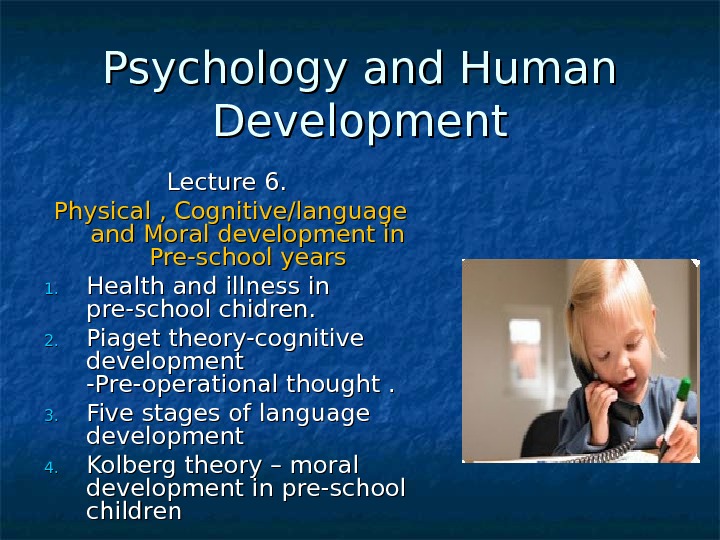
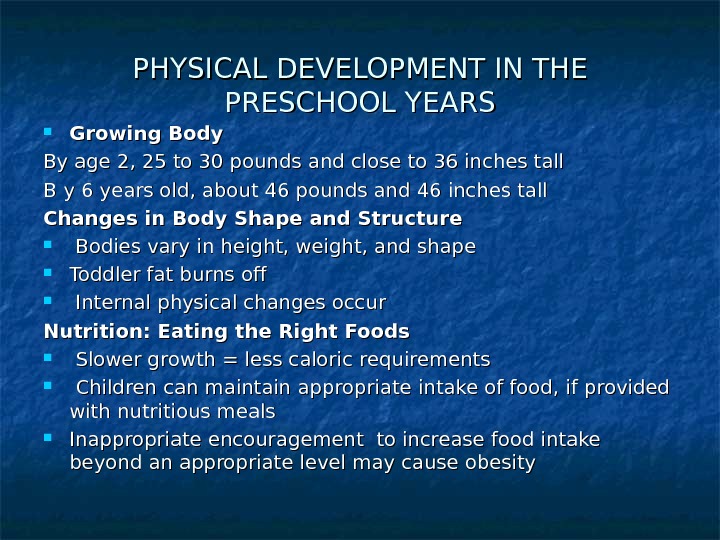
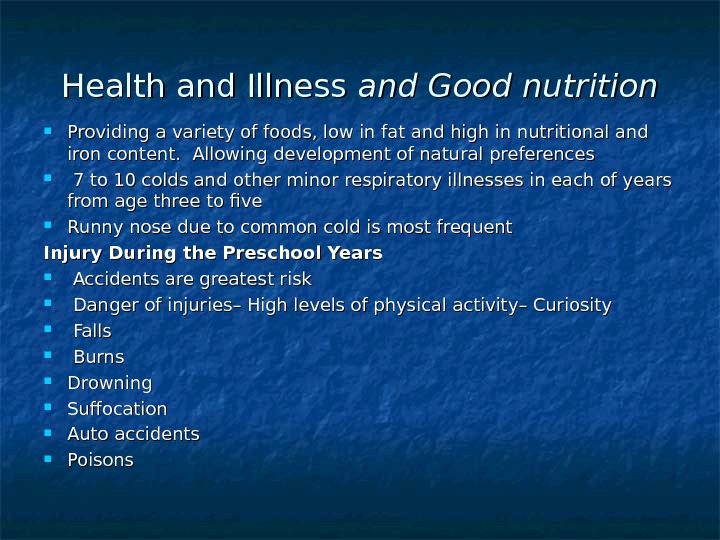
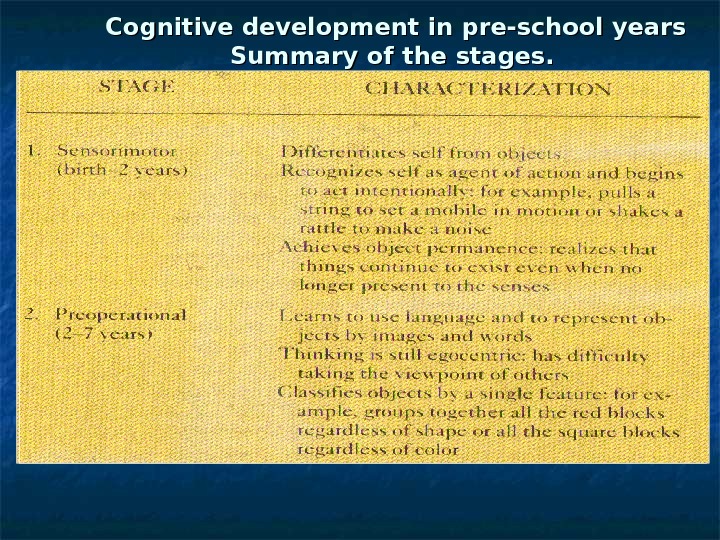
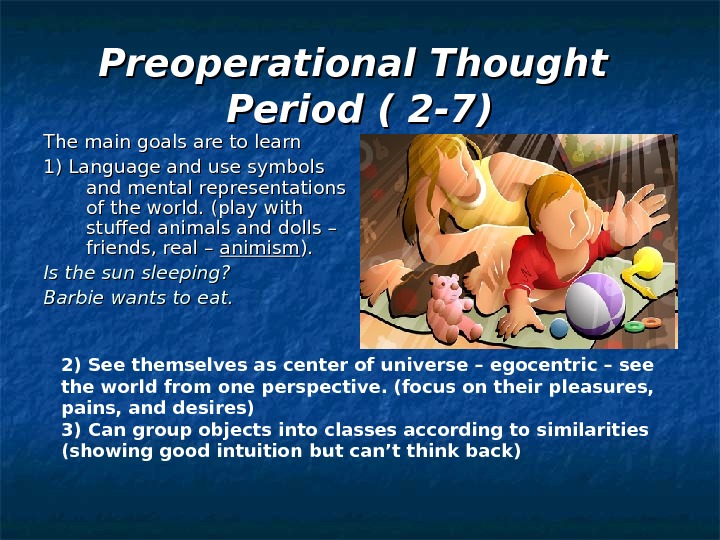
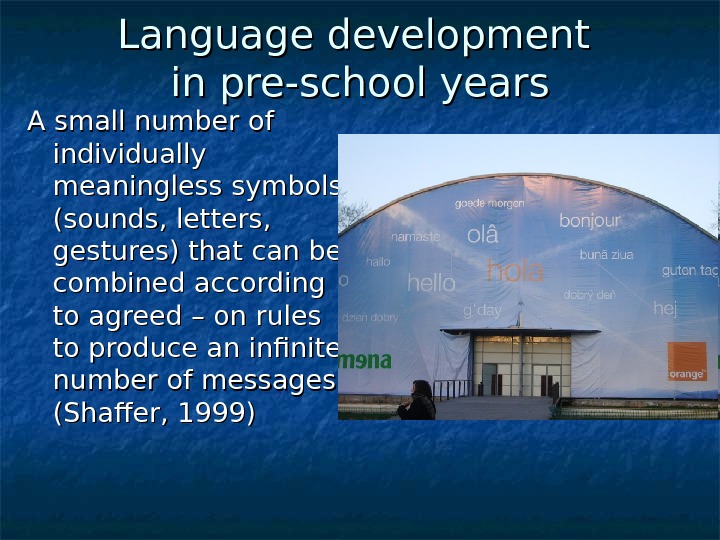
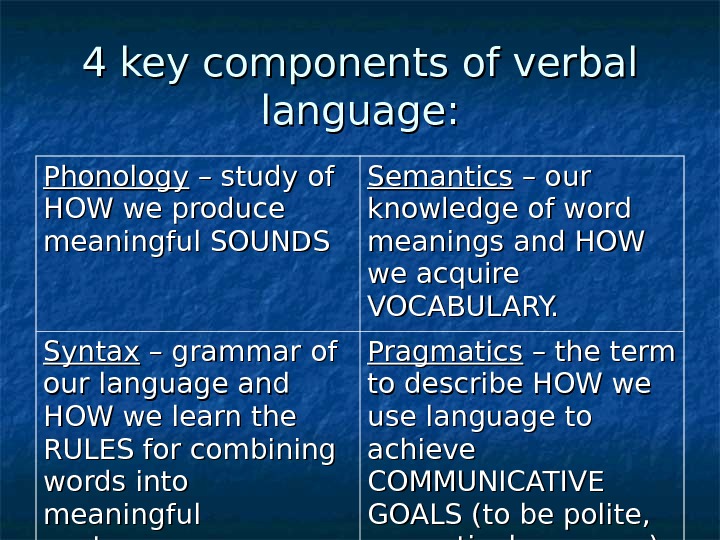
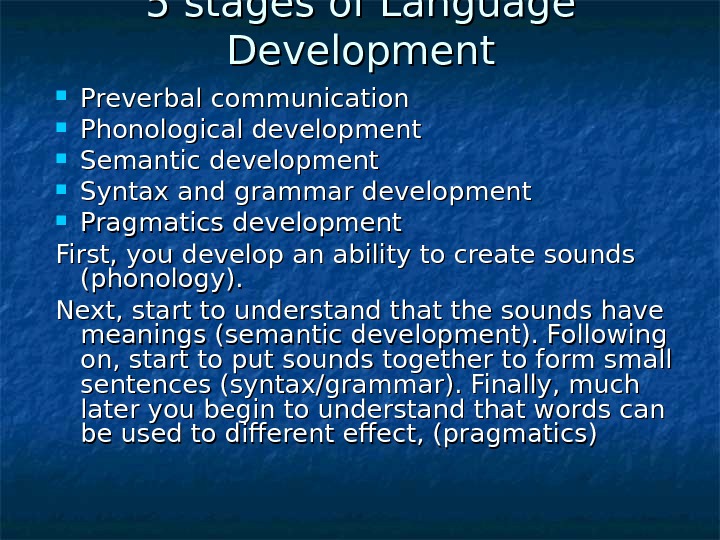
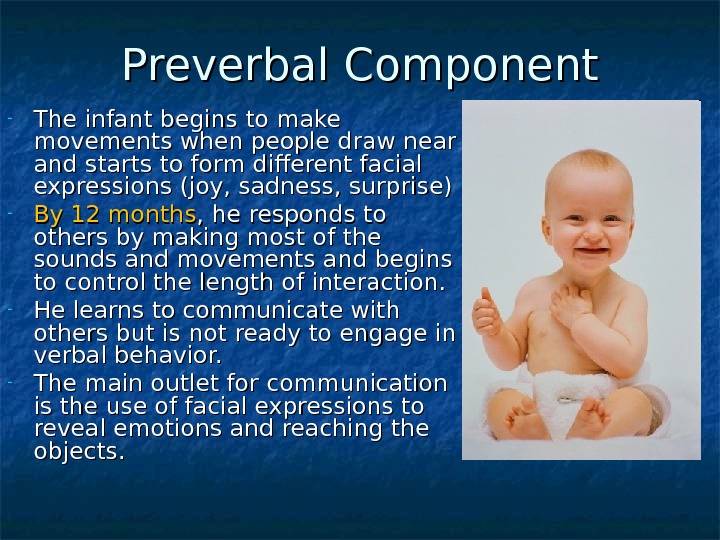
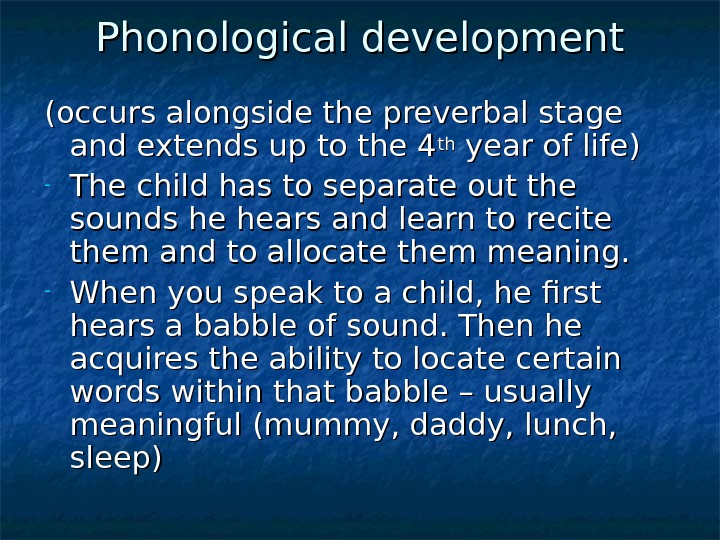
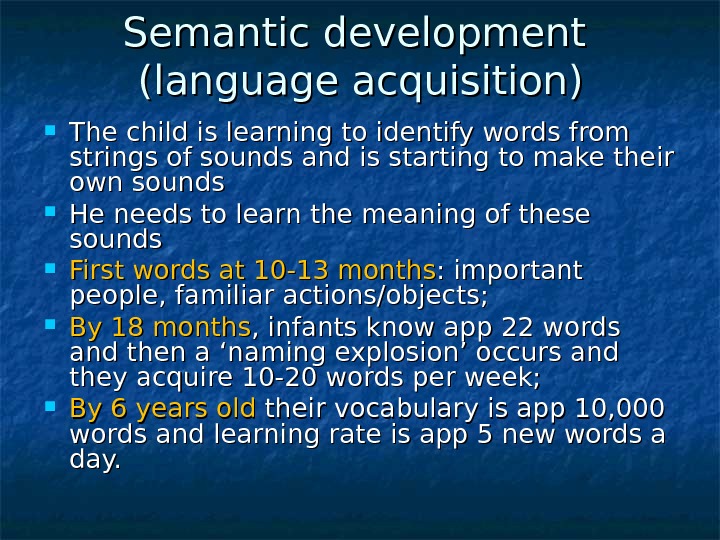
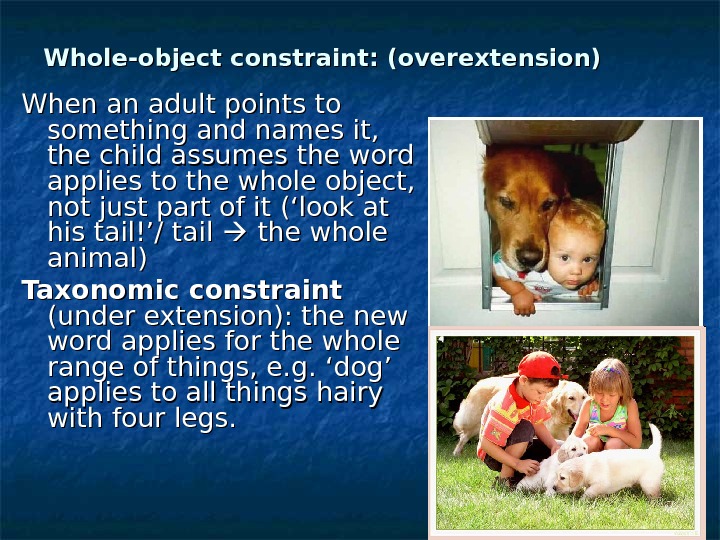
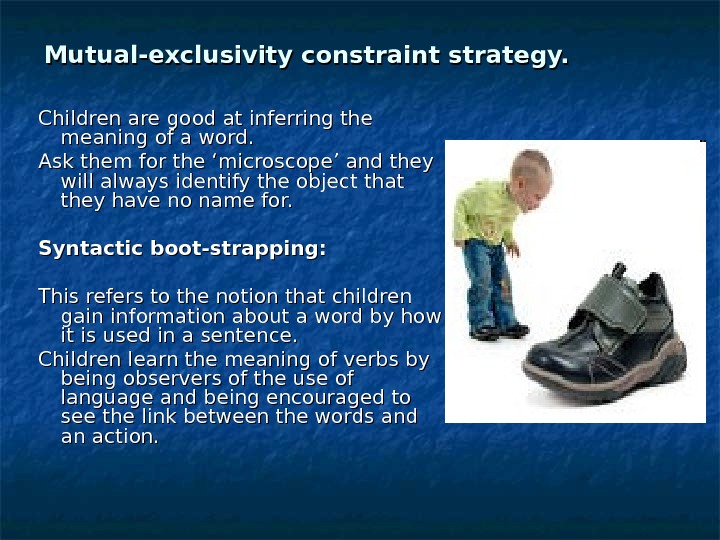
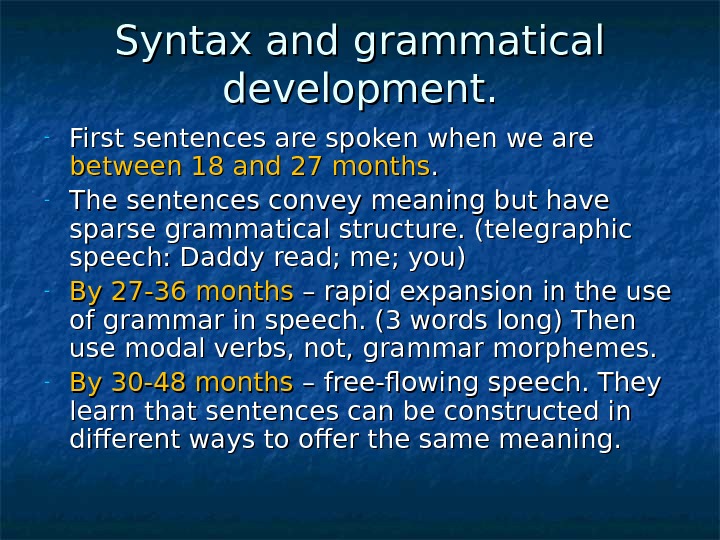

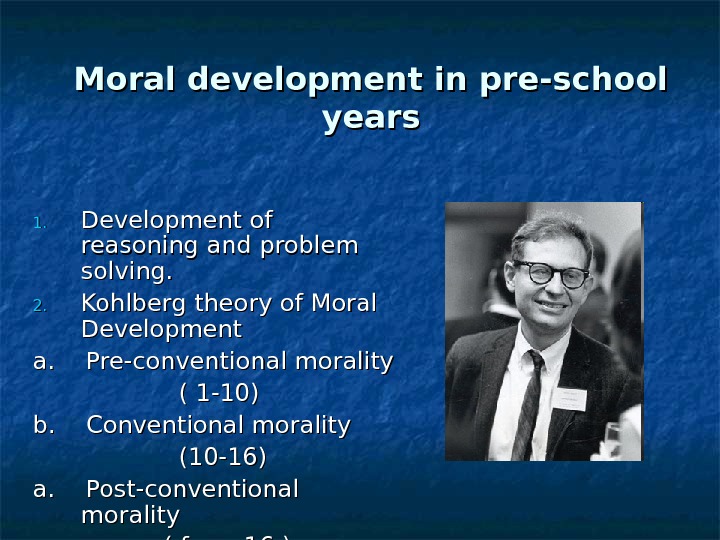


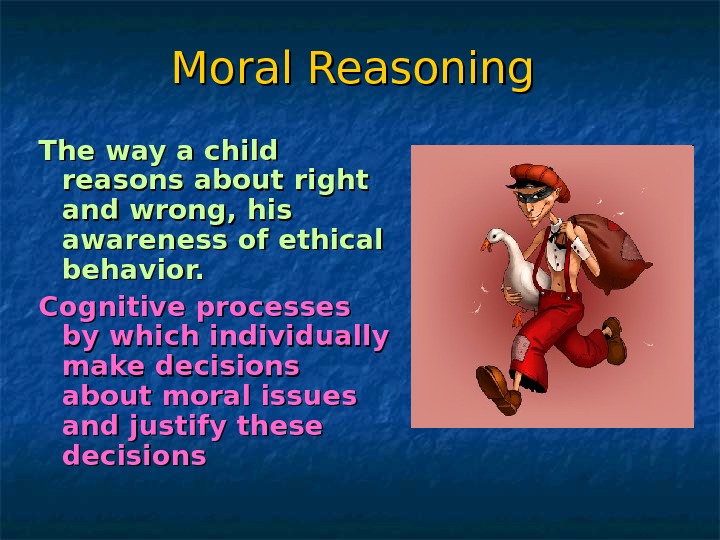
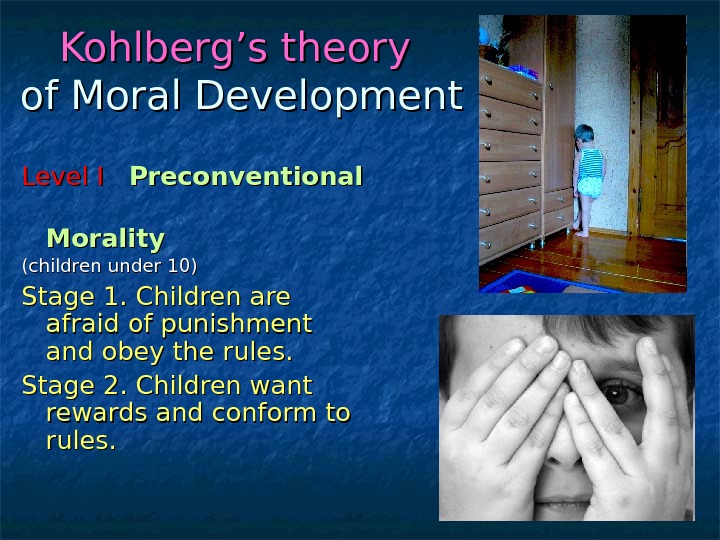
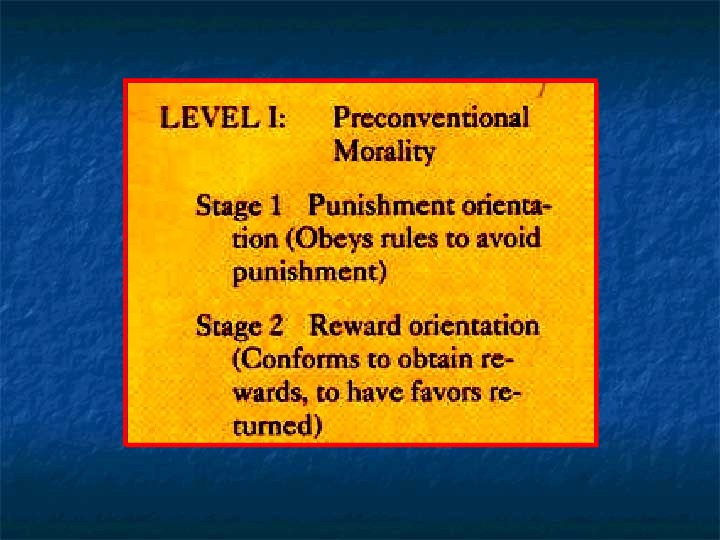
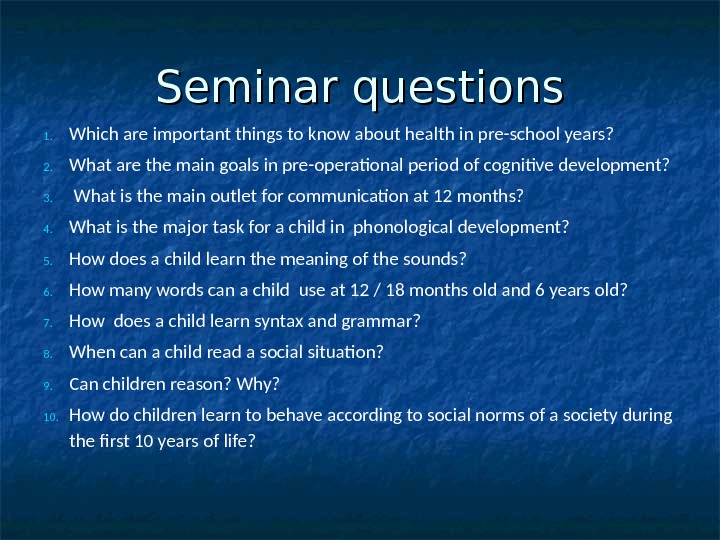
- Размер: 12.8 Mегабайта
- Количество слайдов: 22
Описание презентации Презентация human development lecture 6 по слайдам
 Psychology and Human Development Lecture 66. . Physical , Cognitive/language and Moral development in Pre-school years 1. 1. Health and illness in pre-school chidren. 2. 2. Piaget theory-cognitive development -Pre-operational thought. 3. 3. Five stages of language development 4. 4. Kolberg theory – moral development in pre-school children
Psychology and Human Development Lecture 66. . Physical , Cognitive/language and Moral development in Pre-school years 1. 1. Health and illness in pre-school chidren. 2. 2. Piaget theory-cognitive development -Pre-operational thought. 3. 3. Five stages of language development 4. 4. Kolberg theory – moral development in pre-school children
 PHYSICAL DEVELOPMENT IN THE PRESCHOOL YEARS Growing Body By age 2, 25 to 30 pounds and close to 36 inches tall BB y 6 years old, about 46 pounds and 46 inches tall Changes in Body Shape and Structure Bodies vary in height, weight, and shape Toddler fat burns of Internal physical changes occur Nutrition: Eating the Right Foods Slower growth = less caloric requirements Children can maintain appropriate intake of food, if provided with nutritious meals Inappropriate encouragement to increase food intake beyond an appropriate level may cause obesity
PHYSICAL DEVELOPMENT IN THE PRESCHOOL YEARS Growing Body By age 2, 25 to 30 pounds and close to 36 inches tall BB y 6 years old, about 46 pounds and 46 inches tall Changes in Body Shape and Structure Bodies vary in height, weight, and shape Toddler fat burns of Internal physical changes occur Nutrition: Eating the Right Foods Slower growth = less caloric requirements Children can maintain appropriate intake of food, if provided with nutritious meals Inappropriate encouragement to increase food intake beyond an appropriate level may cause obesity
 Health and Illness and Good nutrition Providing a variety of foods, low in fat and high in nutritional and iron content. Allowing development of natural preferences 7 to 10 colds and other minor respiratory illnesses in each of years from age three to five Runny nose due to common cold is most frequent Injury During the Preschool Years Accidents are greatest risk Danger of injuries– High levels of physical activity– Curiosity Falls Burns Drowning Sufocation Auto accidents Poisons
Health and Illness and Good nutrition Providing a variety of foods, low in fat and high in nutritional and iron content. Allowing development of natural preferences 7 to 10 colds and other minor respiratory illnesses in each of years from age three to five Runny nose due to common cold is most frequent Injury During the Preschool Years Accidents are greatest risk Danger of injuries– High levels of physical activity– Curiosity Falls Burns Drowning Sufocation Auto accidents Poisons
 Cognitive development in pre-school years Summary of the stages.
Cognitive development in pre-school years Summary of the stages.
 Preoperational Thought Period ( 2 -7) The main goals are to learn 1) Language and use symbols and mental representations of the world. (play with stufed animals and dolls – friends, real – animism ). ). Is the sun sleeping? Barbie wants to eat. 2) See themselves as center of universe – egocentric – see the world from one perspective. (focus on their pleasures, pains, and desires) 3) Can group objects into classes according to similarities (showing good intuition but can’t think back)
Preoperational Thought Period ( 2 -7) The main goals are to learn 1) Language and use symbols and mental representations of the world. (play with stufed animals and dolls – friends, real – animism ). ). Is the sun sleeping? Barbie wants to eat. 2) See themselves as center of universe – egocentric – see the world from one perspective. (focus on their pleasures, pains, and desires) 3) Can group objects into classes according to similarities (showing good intuition but can’t think back)
 Language development in pre-school years A small number of individually meaningless symbols (sounds, letters, gestures) that can be combined according to agreed – on rules to produce an infinite number of messages (Shafer, 1999)
Language development in pre-school years A small number of individually meaningless symbols (sounds, letters, gestures) that can be combined according to agreed – on rules to produce an infinite number of messages (Shafer, 1999)
 4 key components of verbal language: Phonology – study of HOW we produce meaningful SOUNDS Semantics – our knowledge of word meanings and HOW we acquire VOCABULARY. Syntax – grammar of our language and HOW we learn the RULES for combining words into meaningful sentences. Pragmatics – the term to describe HOW we use language to achieve COMMUNICATIVE GOALS (to be polite, sarcastic, humorous)
4 key components of verbal language: Phonology – study of HOW we produce meaningful SOUNDS Semantics – our knowledge of word meanings and HOW we acquire VOCABULARY. Syntax – grammar of our language and HOW we learn the RULES for combining words into meaningful sentences. Pragmatics – the term to describe HOW we use language to achieve COMMUNICATIVE GOALS (to be polite, sarcastic, humorous)
 5 stages of Language Development Preverbal communication Phonological development Semantic development Syntax and grammar development Pragmatics development First, you develop an ability to create sounds (phonology). Next, start to understand that the sounds have meanings (semantic development). Following on, start to put sounds together to form small sentences (syntax/grammar). Finally, much later you begin to understand that words can be used to diferent efect, (pragmatics)
5 stages of Language Development Preverbal communication Phonological development Semantic development Syntax and grammar development Pragmatics development First, you develop an ability to create sounds (phonology). Next, start to understand that the sounds have meanings (semantic development). Following on, start to put sounds together to form small sentences (syntax/grammar). Finally, much later you begin to understand that words can be used to diferent efect, (pragmatics)
 Preverbal Component — The infant begins to make movements when people draw near and starts to form diferent facial expressions (joy, sadness, surprise) — By 12 months , he responds to others by making most of the sounds and movements and begins to control the length of interaction. — He learns to communicate with others but is not ready to engage in verbal behavior. — The main outlet for communication is the use of facial expressions to reveal emotions and reaching the objects.
Preverbal Component — The infant begins to make movements when people draw near and starts to form diferent facial expressions (joy, sadness, surprise) — By 12 months , he responds to others by making most of the sounds and movements and begins to control the length of interaction. — He learns to communicate with others but is not ready to engage in verbal behavior. — The main outlet for communication is the use of facial expressions to reveal emotions and reaching the objects.
 Phonological development (occurs alongside the preverbal stage and extends up to the 4 thth year of life) — The child has to separate out the sounds he hears and learn to recite them and to allocate them meaning. — When you speak to a child, he first hears a babble of sound. Then he acquires the ability to locate certain words within that babble – usually meaningful (mummy, daddy, lunch, sleep)
Phonological development (occurs alongside the preverbal stage and extends up to the 4 thth year of life) — The child has to separate out the sounds he hears and learn to recite them and to allocate them meaning. — When you speak to a child, he first hears a babble of sound. Then he acquires the ability to locate certain words within that babble – usually meaningful (mummy, daddy, lunch, sleep)
 Semantic development (language acquisition) The child is learning to identify words from strings of sounds and is starting to make their own sounds He needs to learn the meaning of these sounds First words at 10 -13 months : important people, familiar actions/objects; By 18 months , infants know app 22 words and then a ‘naming explosion’ occurs and they acquire 10 -20 words per week; By 6 years old their vocabulary is app 10, 000 words and learning rate is app 5 new words a day.
Semantic development (language acquisition) The child is learning to identify words from strings of sounds and is starting to make their own sounds He needs to learn the meaning of these sounds First words at 10 -13 months : important people, familiar actions/objects; By 18 months , infants know app 22 words and then a ‘naming explosion’ occurs and they acquire 10 -20 words per week; By 6 years old their vocabulary is app 10, 000 words and learning rate is app 5 new words a day.
 Whole-object constraint: (overextension) When an adult points to something and names it, the child assumes the word applies to the whole object, not just part of it (( ‘look at his tail!’/ tail the whole animal) Taxonomic constraint (under extension): the new word applies for the whole range of things, e. g. ‘dog’ applies to all things hairy with four legs.
Whole-object constraint: (overextension) When an adult points to something and names it, the child assumes the word applies to the whole object, not just part of it (( ‘look at his tail!’/ tail the whole animal) Taxonomic constraint (under extension): the new word applies for the whole range of things, e. g. ‘dog’ applies to all things hairy with four legs.
 Mutual-exclusivity constraint strategy. Children are good at inferring the meaning of a word. Ask them for the ‘microscope’ and they will always identify the object that they have no name for. Syntactic boot-strapping: This refers to the notion that children gain information about a word by how it is used in a sentence. Children learn the meaning of verbs by being observers of the use of language and being encouraged to see the link between the words and an action.
Mutual-exclusivity constraint strategy. Children are good at inferring the meaning of a word. Ask them for the ‘microscope’ and they will always identify the object that they have no name for. Syntactic boot-strapping: This refers to the notion that children gain information about a word by how it is used in a sentence. Children learn the meaning of verbs by being observers of the use of language and being encouraged to see the link between the words and an action.
 Syntax and grammatical development. — First sentences are spoken when we are between 18 and 27 months. . — The sentences convey meaning but have sparse grammatical structure. (telegraphic speech: Daddy read; me; you) — By 27 -36 months – rapid expansion in the use of grammar in speech. (3 words long) Then use modal verbs, not, grammar morphemes. — By 30 -48 months – free-flowing speech. They learn that sentences can be constructed in diferent ways to ofer the same meaning.
Syntax and grammatical development. — First sentences are spoken when we are between 18 and 27 months. . — The sentences convey meaning but have sparse grammatical structure. (telegraphic speech: Daddy read; me; you) — By 27 -36 months – rapid expansion in the use of grammar in speech. (3 words long) Then use modal verbs, not, grammar morphemes. — By 30 -48 months – free-flowing speech. They learn that sentences can be constructed in diferent ways to ofer the same meaning.
 Pragmatics development. — Refers to the ability to identify a social situation and to use the language style considered appropriate in that situation. — The child learns that some words sound the same but have diferent meanings and can use this humorous efect. — Learns to use active and passive voice — Reads a social situation.
Pragmatics development. — Refers to the ability to identify a social situation and to use the language style considered appropriate in that situation. — The child learns that some words sound the same but have diferent meanings and can use this humorous efect. — Learns to use active and passive voice — Reads a social situation.
 Moral development in pre-school years 1. 1. Development of reasoning and problem solving. 2. 2. Kohlberg theory of Moral Development a. Pre-conventional morality ( 1 -10) b. Conventional morality (10 -16) a. Post-conventional morality ( from 16 )
Moral development in pre-school years 1. 1. Development of reasoning and problem solving. 2. 2. Kohlberg theory of Moral Development a. Pre-conventional morality ( 1 -10) b. Conventional morality (10 -16) a. Post-conventional morality ( from 16 )
 Reasoning and Problem-solving Reasoning – capacity for cognitively combining or reorganizing information to produce additional information: a conclusion or solution. Problem-solving – when reasoning is used to reach a particular desired output.
Reasoning and Problem-solving Reasoning – capacity for cognitively combining or reorganizing information to produce additional information: a conclusion or solution. Problem-solving – when reasoning is used to reach a particular desired output.
 Can children reason? Yes — Babies’ exploration of their environment — Using past knowledge in analogical ways to solve problems — Can solve a problem: a. There is a link to past knowledge b. The problem is clearly understood c. Does not overload working memory No. No — It’s often weaker than that of adults: the younger the child, the poorer the knowledge about the problem. — It’s clear that knowledge has benefits for reasoning Increased knowledge is a key factor in the development of problem solving -Can be improved by making children think more strategically and methodically
Can children reason? Yes — Babies’ exploration of their environment — Using past knowledge in analogical ways to solve problems — Can solve a problem: a. There is a link to past knowledge b. The problem is clearly understood c. Does not overload working memory No. No — It’s often weaker than that of adults: the younger the child, the poorer the knowledge about the problem. — It’s clear that knowledge has benefits for reasoning Increased knowledge is a key factor in the development of problem solving -Can be improved by making children think more strategically and methodically
 Moral Reasoning The way a child reasons about right and wrong, his awareness of ethical behavior. Cognitive processes by which individually make decisions about moral issues and justify these decisions
Moral Reasoning The way a child reasons about right and wrong, his awareness of ethical behavior. Cognitive processes by which individually make decisions about moral issues and justify these decisions
 Kohlberg’s theory of Moral Development Level I Preconventional Morality (children under 10) Stage 1. Children are afraid of punishment and obey the rules. Stage 2. Children want rewards and conform to rules.
Kohlberg’s theory of Moral Development Level I Preconventional Morality (children under 10) Stage 1. Children are afraid of punishment and obey the rules. Stage 2. Children want rewards and conform to rules.

 Seminar questions 1. Which are important things to know about health in pre-school years? 2. What are the main goals in pre-operational period of cognitive development? 3. What is the main outlet for communication at 12 months? 4. What is the major task for a child in phonological development? 5. How does a child learn the meaning of the sounds? 6. How many words can a child use at 12 / 18 months old and 6 years old? 7. How does a child learn syntax and grammar? 8. When can a child read a social situation? 9. Can children reason? Why? 10. How do children learn to behave according to social norms of a society during the first 10 years of life?
Seminar questions 1. Which are important things to know about health in pre-school years? 2. What are the main goals in pre-operational period of cognitive development? 3. What is the main outlet for communication at 12 months? 4. What is the major task for a child in phonological development? 5. How does a child learn the meaning of the sounds? 6. How many words can a child use at 12 / 18 months old and 6 years old? 7. How does a child learn syntax and grammar? 8. When can a child read a social situation? 9. Can children reason? Why? 10. How do children learn to behave according to social norms of a society during the first 10 years of life?
